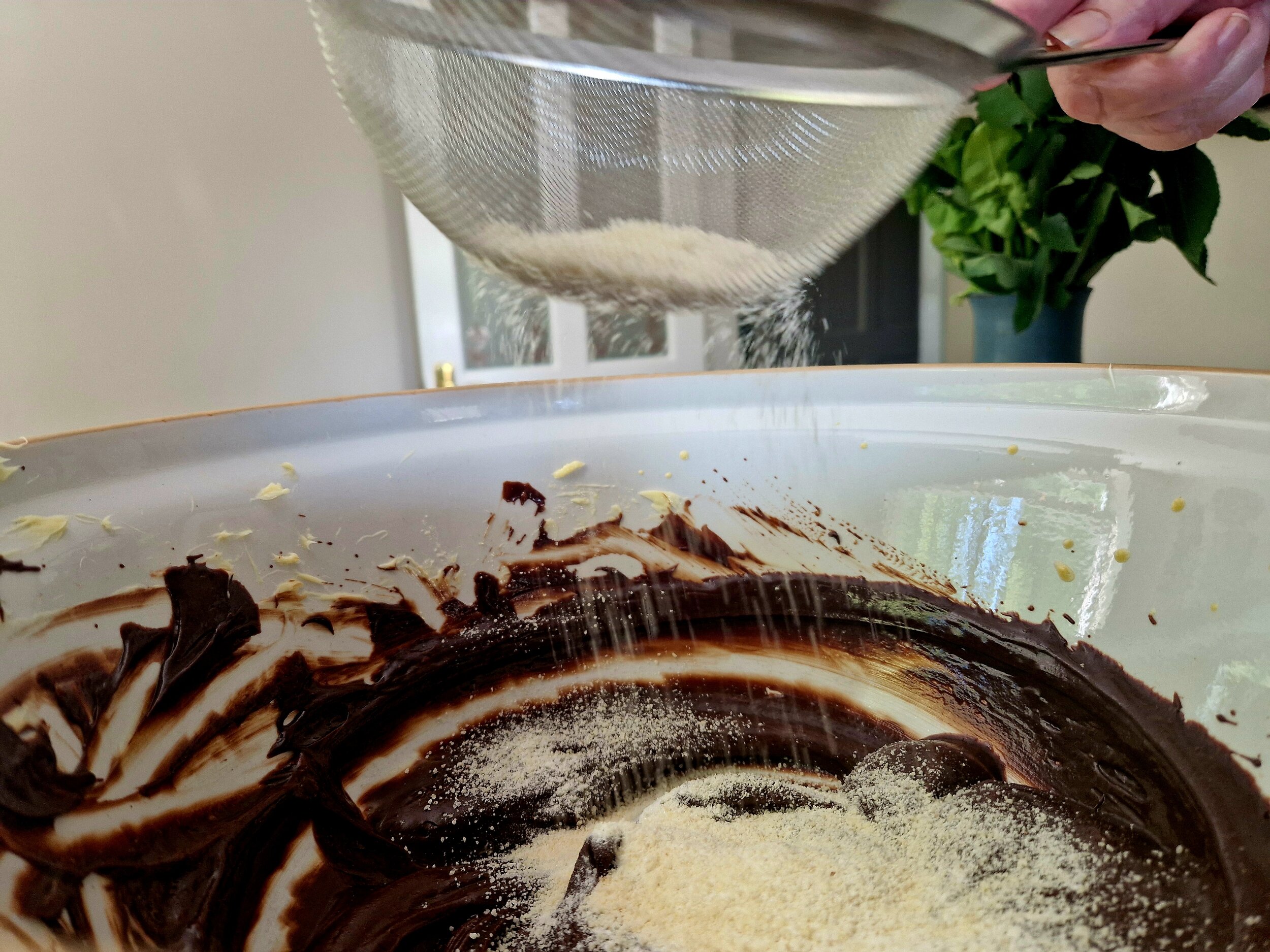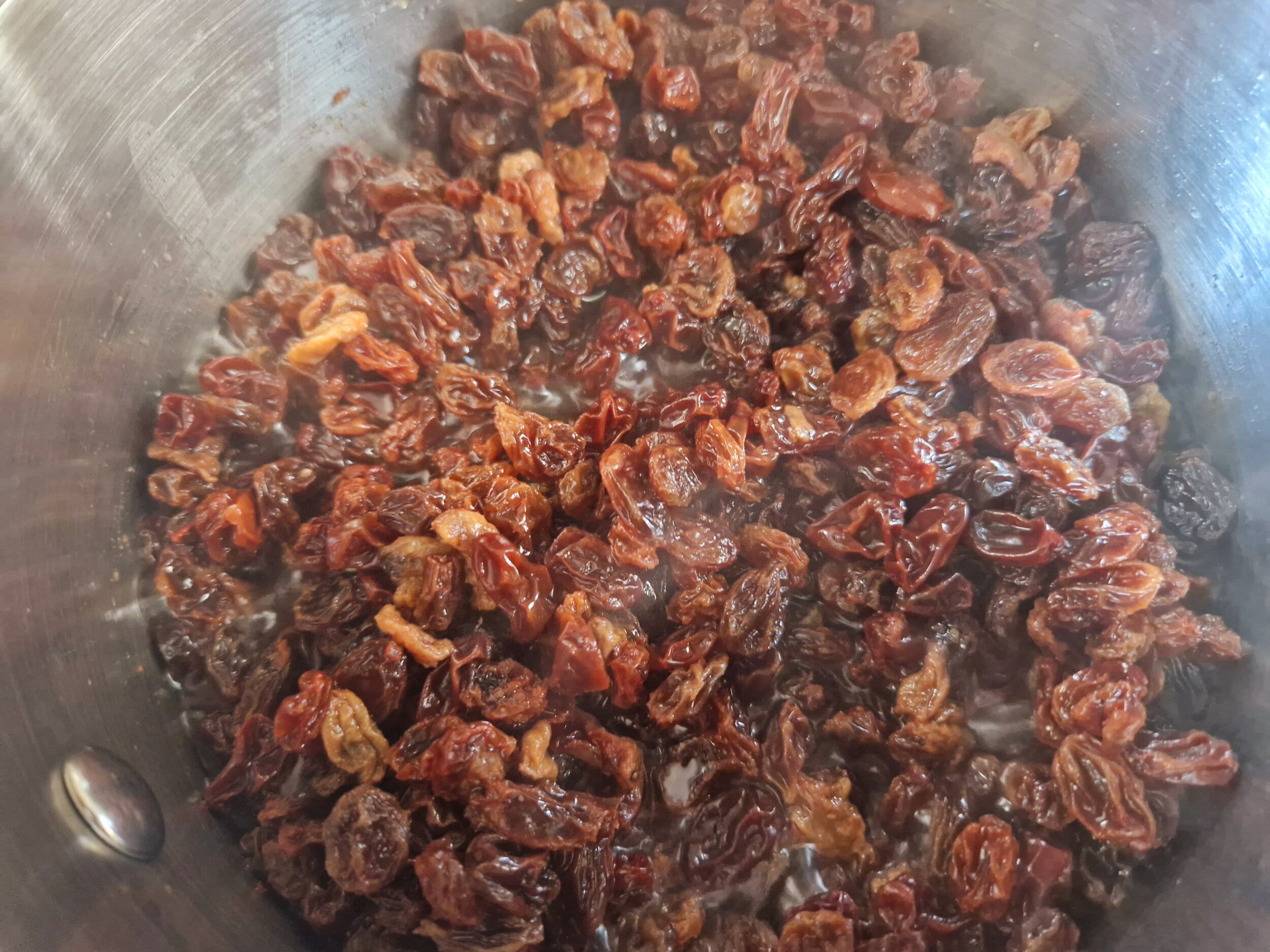A Birthday Cake for Emmeline Pankhurst
We’re celebrating Emmeline Pankhurst’s birthday this weekend – and what would a birthday celebration be without a cake? And our Engagement Officer Hannah thinks she’s found the perfect cake for the occasion…
Emmeline Goulden (later Pankhurst) was born on 15th July 1858 (though she would later claim her birthday as 14th July, as this is Bastille Day). She grew up in a middle-class home in Victorian Manchester, and the Victorian period was an exciting time for cakes! Baking powder was invented in 1843 by Alfred Bird, allowing bakers to create lighter, fluffier sponge cakes, such as the Victoria sponge named for the queen. It also led to the creation of other sponge-based recipes, such as the Swiss roll (first recorded in 1856) and the Battenburg cake (invented in 1884). For more homely tea parties, fruit cakes and seed cakes were popular throughout the Victorian period, and these would likely have been the sort of cakes Emmeline would have been familiar with from her childhood.
However, we’re celebrating Emmeline’s birthday at 62 Nelson Street, the house where she lived from 1898-1907. Emmeline’s time here was mostly under the reign of Edward VII, and so an Edwardian cake seems more fitting for this celebration.
In the Edwardian period, seed cake fell out of fashion. It was replaced by a new taste for chocolate cake, which only really became popular in Britain at the beginning of the twentieth century. Cookbooks had included chocolate recipes from the eighteenth century, but chocolate (whether for baking, eating or drinking) remained a luxury item until the innovations of Fry & Sons and Cadbury’s in the mid-nineteenth century allowed it to be mass-produced and mass-marketed. Middle-class families like the Gouldens and the Pankhursts were unlikely to have bought expensive confectionery made from hand-ground cacoa beans, but they would very much have been the target market for the commercially produced treats created by Fry’s and Cadbury’s in the latter part of the nineteenth century.
And so, a birthday party in Edwardian Nelson Street should really include a chocolate cake!
I’ve chosen a recipe from Agnes Jekyll’s book Kitchen Essays: With Recipes and Their Occasions (1922). It’s a recipe she calls ‘Super-Chocolate Cake’, and which she says is suitable for a ‘festive’ occasion. Agnes Jekyll (1861-1937) was almost a contemporary of Emmeline’s, so her Super-Chocolate Cake seems like the perfect recipe to use.
Super-Chocolate Cake
Here is the original recipe from Kitchen Essays by Agnes Jekyll:
“Half a pound of fresh butter beaten to a cream, 7 eggs (yolks and whites beaten separately, and the whites stirred in the last thing), ½ lb. best vanilla chocolate grated and heated in oven, then beaten up in the butter with 3oz. dried flour, ½ lb. sifted sugar, 4oz. ground almonds, 1 teaspoonful of sal volatile. Bake in a slack oven, then ice with thin soft icing flavoured with maraschino. If ingredients are thoroughly beaten up it will be very light.”
As with any hundred-year-old recipe, the first step with this one is do a bit of translation and alteration.
I’m assuming that a ‘slack oven’ would be around Gas Mark 4 (180˚C. I’ve also decided to replace the sal volatile (baker’s ammonia) with baking powder (thank you Alfred Bird!) for convenience. And I’m not sure whether it’s still possible to get something that Agnes would consider ‘best vanilla chocolate’, so I’ve decided to go with a standard plain chocolate and a little vanilla extract.
Ingredients
½ lb / 225g butter
7 eggs
½ lb / 225g plain chocolate
½ teaspoon vanilla extract
3 oz / 85g plain flour
4 oz / 115g ground almonds
½ lb / 225g caster sugar
1tsp baking powder
Cherry liqueur for the icing (to taste)
Method
Preheat the oven to Gas Mark 4 (180˚C), then grease and line an 8-inch (20cm) deep cake tin. Separate 7 eggs, keeping both the yolks and whites.
Break most of the chocolate into pieces (keep a small amount to one side for the icing) and melt it in a heatproof bowl – you can do this in a microwave or by placing the bowl over a pan of lightly simmering water on the hob. Make sure the chocolate doesn’t burn! Once the chocolate has melted, set it aside to cool.
Beat the butter until it’s soft, pale and fluffy, and then in a separate bowl and using separate utensils beat the eggs whites until they form soft peaks. Now remember, neither Agnes or Emmeline would have used an electric whisk, so if you want to be authentic, you will need to use a hand whisk and some elbow grease!
Next, beat the egg yolks in a separate bowl and using separate utensils.
Beat the melted chocolate and vanilla extract into the butter, and then beat in the egg yolks. Next, sift in the flour, caster sugar, ground almonds and baking powder. Fold the dry ingredients into the wet, and then when it’s combined fold in the egg whites using a metal spoon. Try to keep as much air in the mixture as you can, while also ensuring the egg whites are fully combined.
Spoon into the cake tin and bake for around an hour.
When the cake is baked, make a simple icing from melted chocolate, a little icing sugar, a drop of water (if needed) and a dash of cherry liqueur (if you wish). I used kirsch, though Agnes’s recipe suggests maraschino, as it was what I had available.
A word of caution from Agnes Jekyll…
The recipe for Super-Chocolate Cake in Kitchen Essays ends with an admission that it is not a particularly ‘thrifty’ recipe, and that it might not be suitable for ‘the ladies of the local political organisation in conclave’. Agnes suggests a ‘nice useful’ fruit cake might be more appropriate for such ladies and includes a recipe for Wardley Cake.
I decided I should take Agnes’s advice and make a thrifty alternative, and I decided to go with a (albeit American) recipe for ‘Inexpensive Spice Cake’ from the 2022 Suffragette Cookbook (edited by Kate Williams), as it looked like a nice useful recipe for ladies of the local political organisation.
Inexpensive Spice Cake
Ingredients
½ cup / 4oz / 115g shortening*
2 cups / 1 lb / 450g brown sugar
Grated rind of a lemon
2 eggs
3 cups / 13¼ oz / 375g plain flour
1 lb / 450g raisins
½ teaspoon cinnamon
Dash of cloves and nutmeg
* Originally, the word ‘shortening’ referred to animal fat, specifically lard. Vegetable shortening (made of 100% hydrogenated vegetable oil) was invented in the early twentieth century, and the word is now generally used in that sense. As a lot of suffragettes were vegetarian, I think vegetable shortening is perfectly appropriate for this recipe. And, if you can’t find shortening, margarine is a good compromise (it’s also made with vegetable oils, but with added water).
Method
Preheat the oven to Gas Mark 4 (180˚). Then start by boiling the raisins in around 1½ cups (c. 375ml) of water. When boiled, drain the raisins but reserve the water for later.
Beat the shortening and sugar together, and then add the lemon rind, eggs, spices and mix thoroughly.
Next, add 1 cup (c.4 ¼oz / 120g) of flour, followed by the boiled raisins. Once the raisins are stirred in, add the rest of the flour. Take half a cup of the water the raisins were boiled in and stir in a teaspoon of bicarbonate of soda (it should fizz up a little). Add this to the cake mix and give it a good stir.
The recipe says that the cakes should be baked in a gem pan, which is a specialized bit of kit these days. If you’ve got one, use it! But I didn’t have one, so I used a bun tin with paper cake cases to help the cakes rise and keep their shape. If you want slightly larger cakes, you could use a muffin tin and cases.
The recipe doesn’t specify a baking time, so I did mine by eye. It took 30 minutes to bake cakes in a bun tin, but you might want to allow a little longer for larger cakes.
Once they’re cooled, ice with white or chocolate icing. Or, if you’re celebrating Emmeline Pankhurst’s birthday, you might want to ice them in the suffragette colours!










